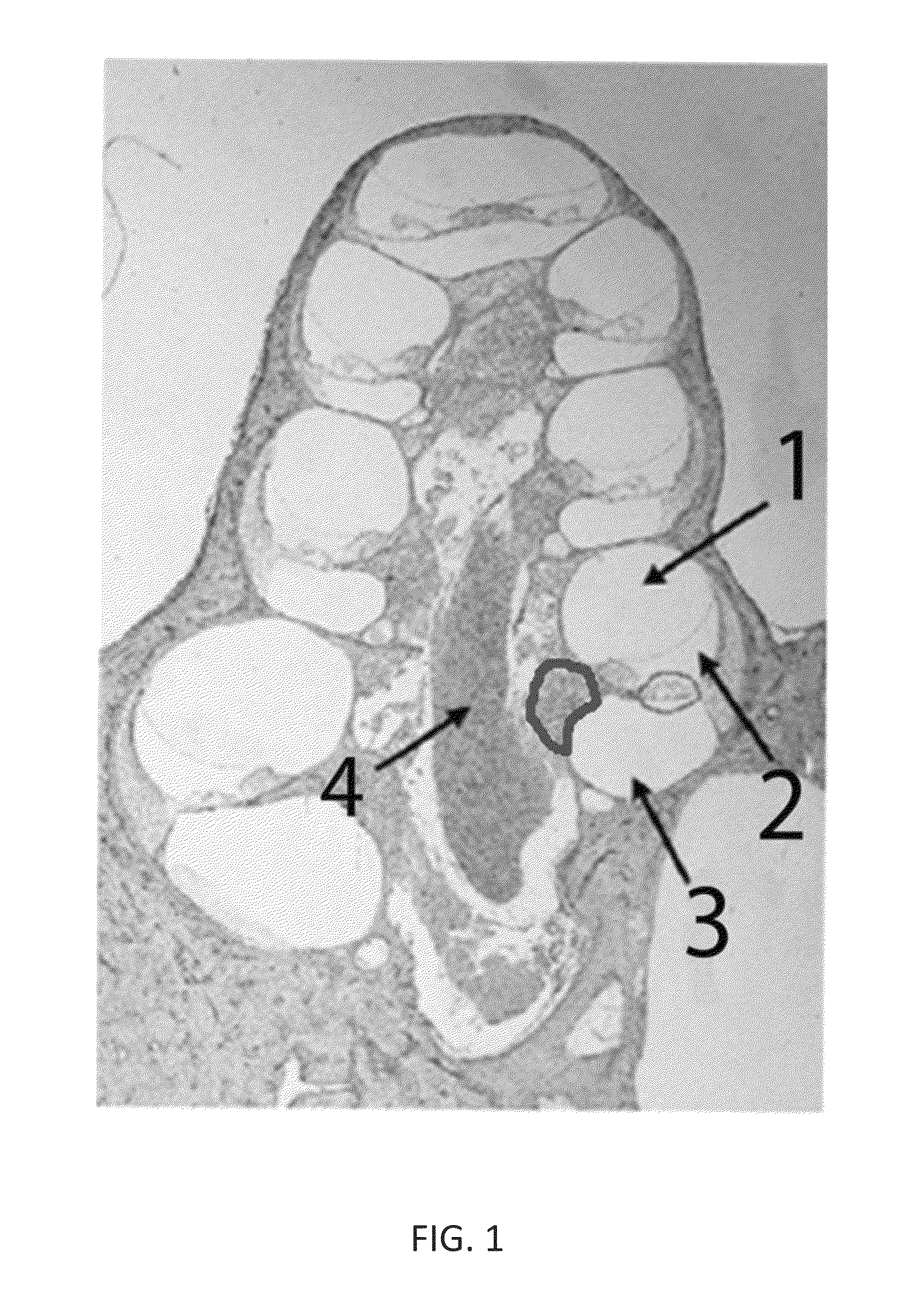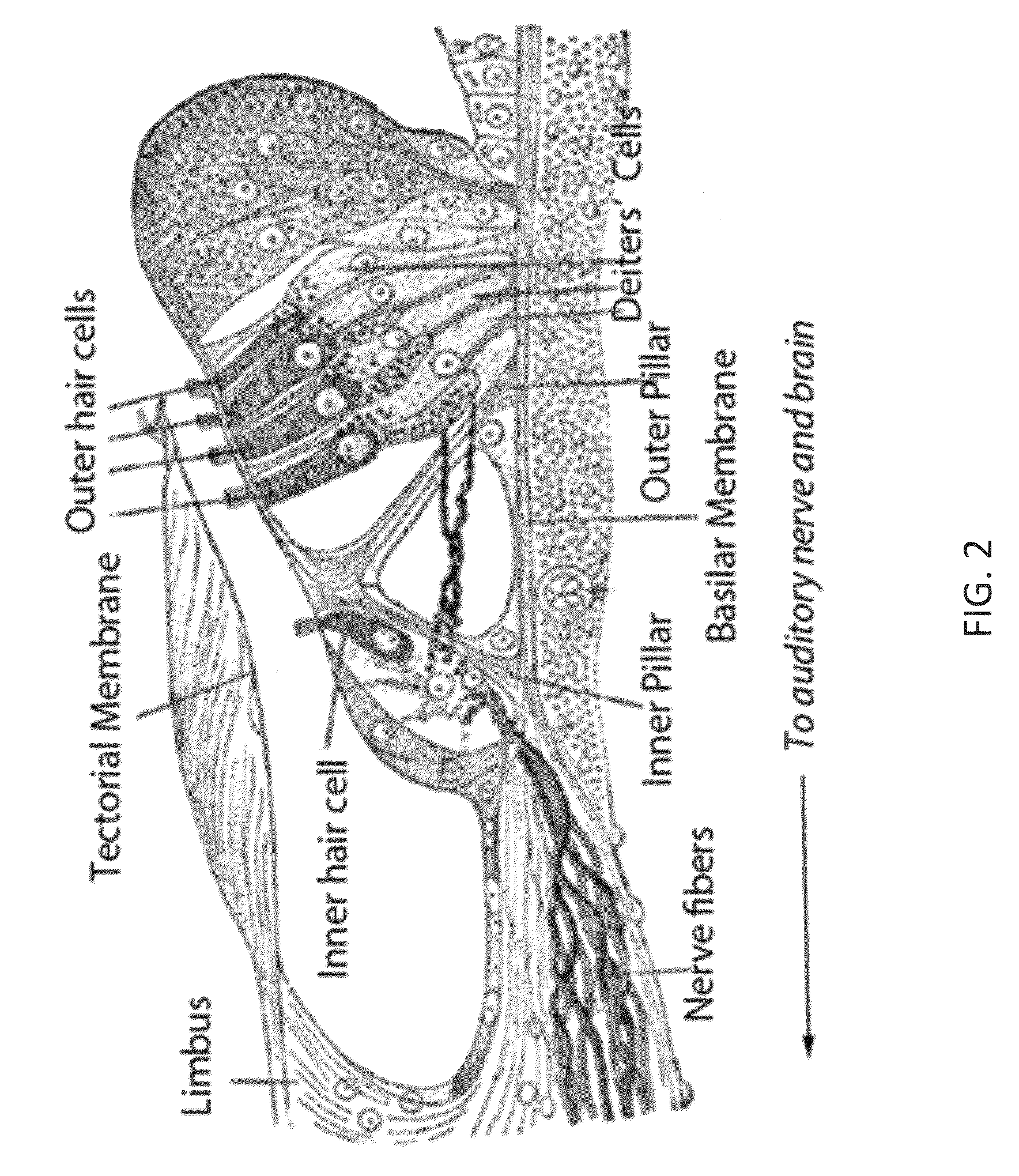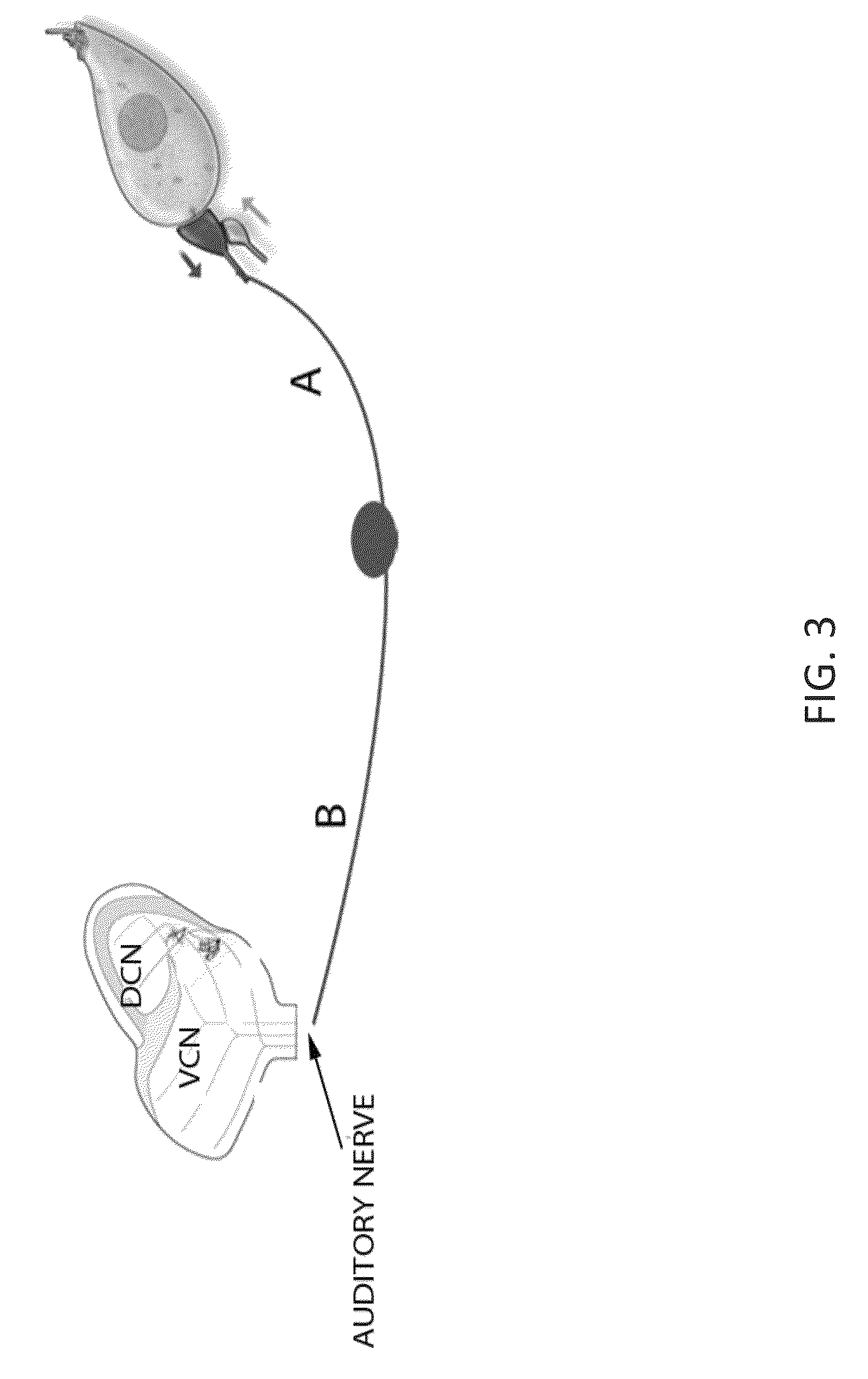Local cochlear application of statins for stimulating neurite regrowth in the cochlea
a cochlea and cochlea technology, applied in the field of local cochlear application of statins, can solve the problems of “temporary” deafness, failure to reveal serious aspects of hearing damage, and damage to neurons that are required to encode acoustic information at higher sound levels, and achieve the effect of preventing or treating hearing loss
- Summary
- Abstract
- Description
- Claims
- Application Information
AI Technical Summary
Benefits of technology
Problems solved by technology
Method used
Image
Examples
example 1
Materials
[0107]Antibodies: Mouse anti TuJ1 (Covance); Nuclear Yellow (Hoechst); Dulbecco's phosphate buffered saline without calcium or magnesium (DPBS; Sigma Aldrich, St Louis, Mo. #D8537); glucose (45%) (Sigma Aldrich #G8769); Dispase (Calbiochem, San Diego, Calif. #322120); DNAse (Sigma-Aldrich #D4513); DMEM / F12 (Sigma Aldrich #D6421); L-glutamine (Sigma-Aldrich #G6392); N2 mix (Invitrogen, Carlsbad, Calif. #17501048); Neurotrophic factor 3 (NT3) and Brain Derived Neurotrophic Factor (BDNF) were purchased from Promega (Madison, Wis.); Leukemia Inhibitory Factor, LIF (Sigma Aldrich); fetal bovine serum (Sigma Aldrich F2442), Polystyrene 384 well plates precoated with poly-D-lysine (Becton Dickinson Labware); Laminin (Sigma-Aldrich, L2020); mouse TuJ1 monoclonal antibody (Covance, Berkeley Calif.); Triton-X-100; Bone morphogenetic protein 4, BMP4 (R&D Systems, Minneapolis, Minn.); H1152, fasudil, hydroxyfasudil (all from EMD Chemicals, Gibbstown, N.J.); DMSO, Sigma; paraformaldehyd...
example 2
In Vitro Screening Assay Procedures
Animal.
[0108]CD-1 mice (Charles River Laboratories, Wilmington Mass.), age newborn, were used for cultures that test neurite length; postnatal day 1-2 mice were used for cultures that test survival. Mice were anesthetized by cooling at −80° C. for 4 minutes and euthanized by aseptic decapitation.
Solutions.
[0109]Dissecting Buffer I: DPBS containing 1.4 mls of 45% glucose. Dispase solution: DPBS containing Dispase at 5 units / ml. Dissecting Buffer II: Dissecting Buffer I containing DNAse at a final concentration of 10μ / ml. Dissociation medium: DMEM / F12 containing 2 mM L-glutamine, N2 mix (1:100); 0.63 mls of 45% glucose for each 100 ml of DMEM / F12. Growth factor mix: Dissociation medium plus 20 ng / ml each NT3 and BDNF with or without LIF (100 ng / ml) or BMP4 (50 ng / ml), plus 20% fetal bovine serum, previously heat inactivated.
[0110]Polystyrene, multiwell plates (384 well) pretreated with poly-D-lysine were coated with laminin 24 hours be...
example 3
Animal Model Screening Procedures
[0116]Drug efficiency was tested in guinea pigs, 200-500 g in bodyweight. The approach was as follows. Baseline cochlear function was determined with auditory brainstem responses. Sound levels to evoke a visual ABR response were determined for pure tones at selected frequencies between 2 and 32 kHz and for acoustic clicks. Delay times and amplitudes for wave I-V of the ABR were measured. A small ˜180 μm catheter was surgically implanted into scala media of the cochlear basal turn. Through this catheter the drug dissolved in a carrier was delivered with an osmotic pump. After the pump implantation, the animals were allowed to recover from anesthesia. The animals were exposed to broadband noise (4-8 kHz or 8-16 kHz at 100-120 dB for 1-4 h). Noise exposure was always after baseline cochlear function was established 10 and 1 week before pump implantation to determine the ability of the drug to repair and reverse degeneration, and during recovery from imp...
PUM
| Property | Measurement | Unit |
|---|---|---|
| neurite lengths | aaaaa | aaaaa |
| neurite lengths | aaaaa | aaaaa |
| neurite length | aaaaa | aaaaa |
Abstract
Description
Claims
Application Information
 Login to View More
Login to View More - R&D
- Intellectual Property
- Life Sciences
- Materials
- Tech Scout
- Unparalleled Data Quality
- Higher Quality Content
- 60% Fewer Hallucinations
Browse by: Latest US Patents, China's latest patents, Technical Efficacy Thesaurus, Application Domain, Technology Topic, Popular Technical Reports.
© 2025 PatSnap. All rights reserved.Legal|Privacy policy|Modern Slavery Act Transparency Statement|Sitemap|About US| Contact US: help@patsnap.com



